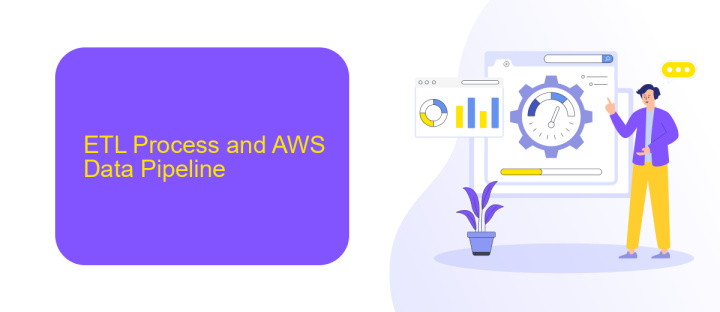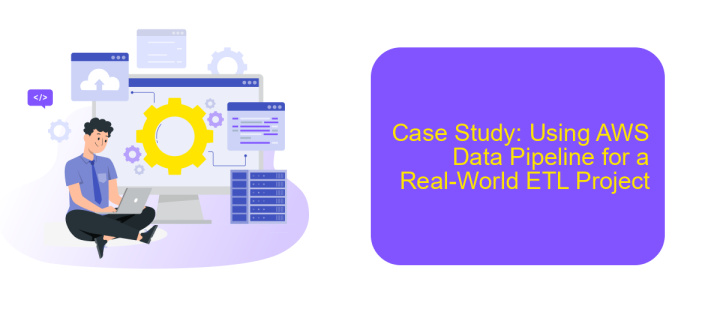AWS Data Pipeline ETL
AWS Data Pipeline is a powerful service that enables seamless data-driven workflows and complex data processing tasks in the cloud. It simplifies the process of moving, transforming, and processing data across AWS services and on-premises resources. This article explores the capabilities of AWS Data Pipeline for ETL (Extract, Transform, Load) operations, highlighting its benefits, features, and practical applications.
Introduction
The AWS Data Pipeline is a web service that helps you reliably process and move data between different AWS compute and storage services, as well as on-premises data sources. It allows you to create complex data processing workloads that are fault-tolerant, repeatable, and highly available.
- Automates the movement and transformation of data.
- Integrates seamlessly with various AWS services.
- Supports scheduling and dependency tracking.
For those looking to streamline their data integration processes, services like ApiX-Drive can be invaluable. ApiX-Drive simplifies the setup of integrations between various applications and services, making it easier to automate workflows and ensure data consistency across platforms. By leveraging AWS Data Pipeline and ApiX-Drive, businesses can achieve efficient data management and integration, leading to more informed decision-making and operational efficiency.
ETL Process and AWS Data Pipeline

The ETL (Extract, Transform, Load) process is a critical component in managing and analyzing large datasets. AWS Data Pipeline facilitates this process by providing a reliable and scalable service for orchestrating data workflows. In the extraction phase, data is gathered from various sources such as databases, APIs, and flat files. AWS Data Pipeline supports multiple data sources, making it easy to collect data from diverse environments.
During the transformation phase, the extracted data is processed and converted into a suitable format for analysis. AWS Data Pipeline integrates seamlessly with other AWS services like AWS Lambda and Amazon EMR, allowing for powerful data transformation capabilities. Finally, in the load phase, the transformed data is loaded into target data stores such as Amazon S3, Redshift, or RDS. For additional integration needs, services like ApiX-Drive can be utilized to automate data transfers and streamline the entire ETL process, ensuring that data is consistently updated and readily available for analysis.
Benefits of Using AWS Data Pipeline for ETL

AWS Data Pipeline offers a robust and scalable solution for automating and managing ETL (Extract, Transform, Load) processes. It allows businesses to efficiently handle large volumes of data by integrating various AWS services and on-premises data sources.
- Scalability: AWS Data Pipeline can scale according to your data processing needs, ensuring that your ETL workflows can handle increasing data volumes without performance degradation.
- Reliability: The service ensures high availability and fault tolerance, which minimizes downtime and ensures continuous data processing.
- Cost-Effective: Pay-as-you-go pricing allows you to optimize costs by only paying for the resources you use, making it a cost-effective solution for businesses of all sizes.
- Flexibility: With support for various data sources and destinations, including S3, RDS, and Redshift, AWS Data Pipeline provides a flexible environment for diverse ETL tasks.
- Automation: The service offers scheduling capabilities, allowing you to automate complex workflows and reduce manual intervention.
For seamless integration with other platforms, services like ApiX-Drive can be utilized. ApiX-Drive simplifies the integration process, enabling you to connect different data sources and applications effortlessly. By leveraging AWS Data Pipeline and ApiX-Drive, businesses can achieve a highly efficient and automated ETL process, ensuring timely and accurate data availability for analysis and decision-making.
Case Study: Using AWS Data Pipeline for a Real-World ETL Project

In a real-world scenario, a retail company needed to streamline its data processing from multiple sources, including sales data, customer information, and inventory levels. They chose AWS Data Pipeline to automate and manage their ETL (Extract, Transform, Load) processes efficiently. The goal was to ensure timely and accurate data flow into their data warehouse for better analytics and decision-making.
The project involved setting up data pipelines that extracted data from various sources like on-premises databases and cloud storage, transformed it to meet the company's data standards, and loaded it into Amazon Redshift for analysis. The company also integrated ApiX-Drive to facilitate seamless data flow between different applications and services, enhancing the overall efficiency of the ETL process.
- Extract data from on-premises databases and cloud storage
- Transform data to meet business requirements
- Load data into Amazon Redshift for analysis
- Integrate with ApiX-Drive for seamless data flow
By leveraging AWS Data Pipeline and ApiX-Drive, the retail company successfully automated their ETL processes, resulting in significant time savings and improved data accuracy. This enabled them to gain better insights into their operations and make more informed business decisions.
- Automate the work of an online store or landing
- Empower through integration
- Don't spend money on programmers and integrators
- Save time by automating routine tasks
Best Practices and Considerations for AWS Data Pipeline ETL
When designing an AWS Data Pipeline ETL process, it is crucial to ensure data reliability and consistency. Use retries and error handling mechanisms to manage transient failures effectively. Additionally, implement logging and monitoring to track the pipeline's performance and identify any bottlenecks or issues promptly. Utilize AWS CloudWatch for monitoring and set up alerts to notify you of any anomalies or failures in the pipeline. Regularly review and optimize your pipeline configurations to ensure they meet the evolving needs of your data workflows.
Security is another critical consideration. Ensure that sensitive data is encrypted both in transit and at rest. Use AWS IAM roles and policies to control access to your data pipeline and associated resources. For seamless integration with other services and applications, consider using ApiX-Drive, which can help automate and streamline data flows between various platforms. Lastly, always test your ETL processes in a staging environment before deploying them to production to minimize the risk of disruptions.
FAQ
What is AWS Data Pipeline?
How does AWS Data Pipeline handle failure?
Can AWS Data Pipeline integrate with third-party services?
What are the key components of AWS Data Pipeline?
How do you monitor AWS Data Pipeline?
Apix-Drive will help optimize business processes, save you from a lot of routine tasks and unnecessary costs for automation, attracting additional specialists. Try setting up a free test connection with ApiX-Drive and see for yourself. Now you have to think about where to invest the freed time and money!


